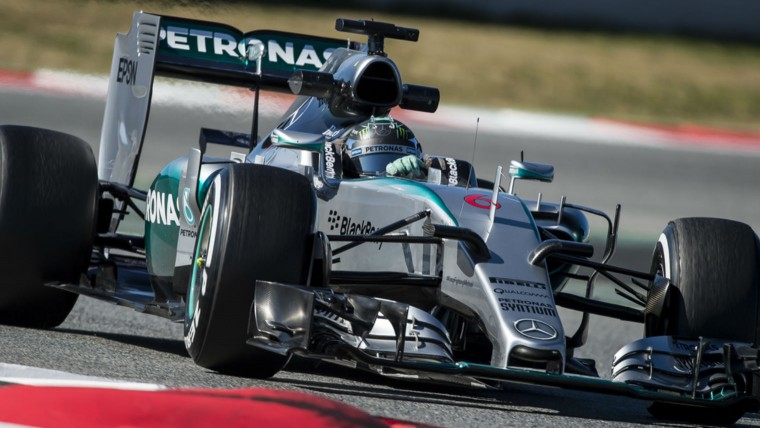At the start of the 2014 Formula 1 season, existing 2.4-litre 18,000rpm V8 engines were replaced with 1.6-litre 15,000rpm turbocharged V6s, featuring greatly enhanced recovery systems. They are the most efficient engines the sport has ever seen and mark the beginning of a new era for F1.
The switch is a gamble. The sport’s governing body, the Fédération Internationale de l’Automobile (FIA), is betting on F1’s future and its concerns for the environment must be balanced against the risks of transforming a 65-year-old winning formula.
A huge amount of money is also at stake. In 2013 Mercedes spent £133.9 million on its F1 engine division alone. The engine’s material costs are believed to make up at most 10 per cent of this, with the remainder spent on development. With another three manufacturers – Ferrari, Renault and Honda – competing against Mercedes in 2015, it’s a big-money business.
The changes align F1 more closely with the direction the motor industry is taking and reflect the increasing popularity of hybrid vehicles. The energy recovery devices are driven by heat from the exhaust, giving a 120kW boost for 33.3 seconds per lap. Fuel economy has also been improved. A 30 per cent increase in efficiency means the cars are limited to using 100kg (around 140 litres) of fuel per race. So, just as road-car makers constantly strive to produce models that do more miles per gallon, F1 engineers are now chasing as much power as possible from a given amount of fuel.
The introduction of the new engines has not been without controversy and there have been three key areas of contention. Firstly, limits on engine development, intended to cut costs, have led to the dominance of Mercedes which won the 2014 F1 team and driver’s titles. At a time when sport on TV is facing increasing pressure from new media as a source of entertainment, F1 cannot afford viewers to switch off.
The V6 engines are smaller and more environmentally friendly, but cost around twice as much at an estimated £20 million annually
Another problem is the new units lack the distinctive high-pitched scream of their predecessors. F1’s distinctive sound is one of its unique selling points and circuits have expressed concern that fans maybe turning away from a sport which is breaking with one of its defining traditions.

V6 engines have a distinctly different sound compared to the iconic V8 engine
The third problem is cost. Although the V6 engines are smaller and more environmentally friendly, they cost around twice as much at an estimated £20 million annually. This extra cost fuelled the collapse of the Caterham and Marussia teams last year.
F1’s chief executive Bernie Ecclestone has been one of the most vocal critics of the new engines and recently proposed a return to V8s which was rejected by the teams. His verdict on the new engines is clear. “Good power unit and a wonderful bit of engineering, but not designed for Formula 1,” he says. It is an issue which will continue to divide the sport over the coming season.

